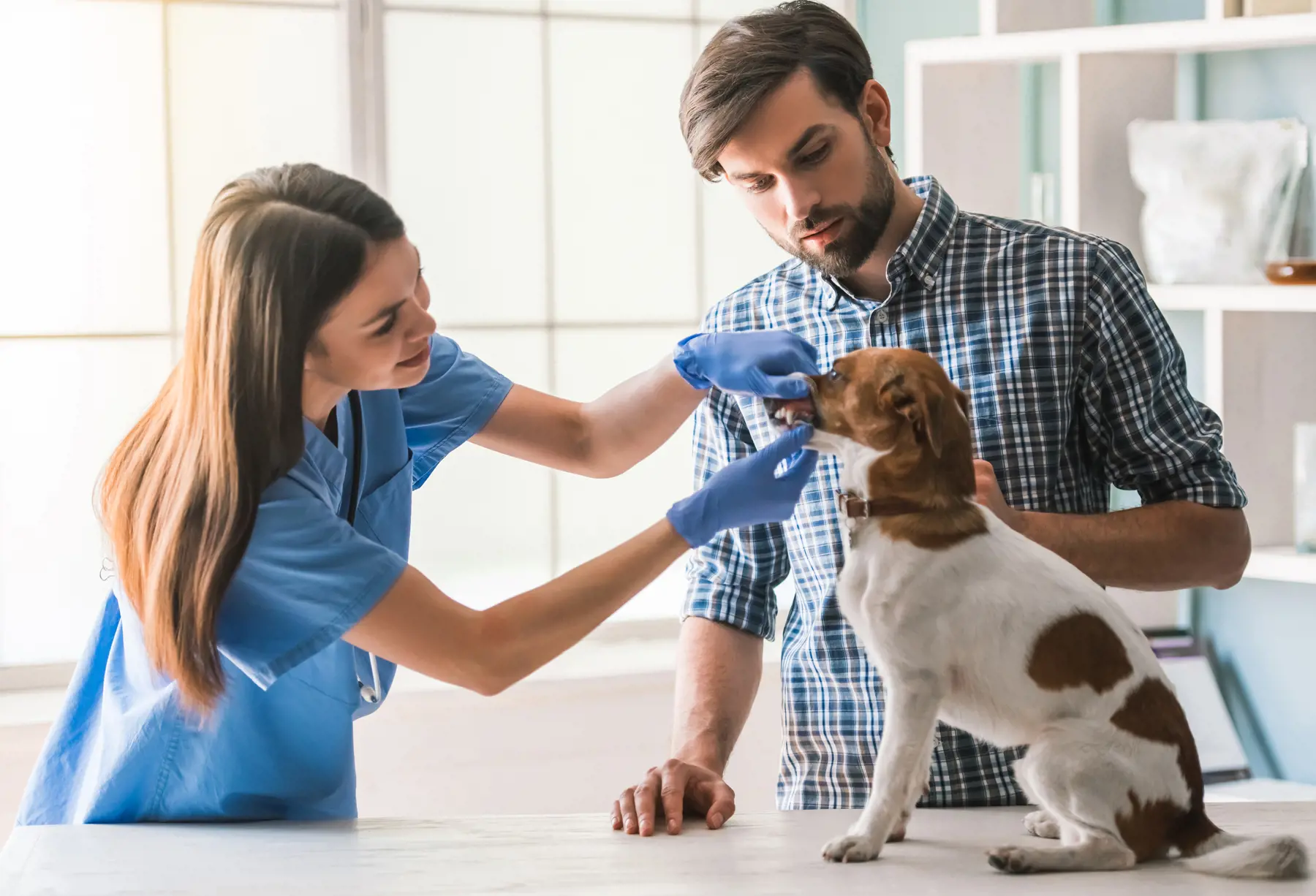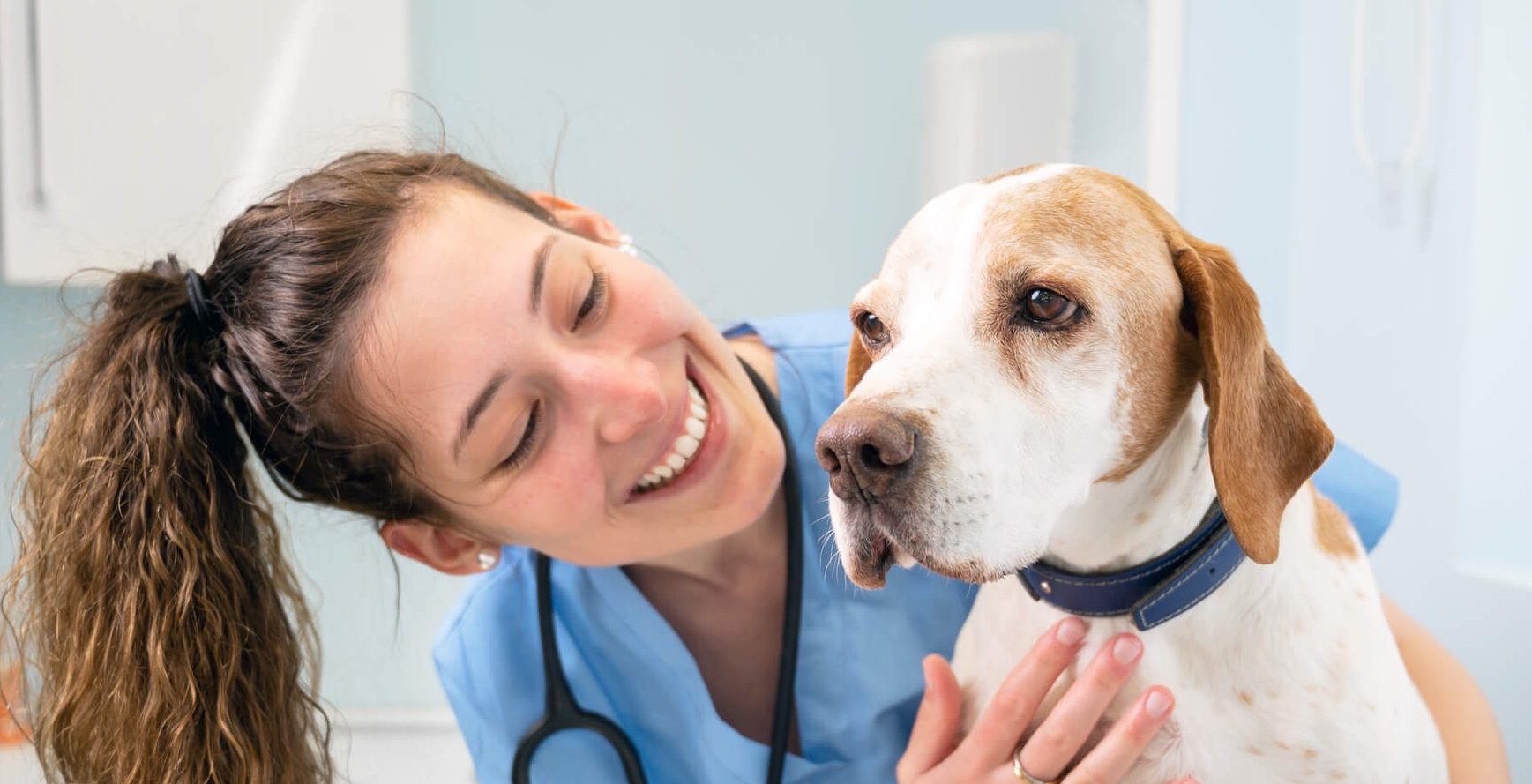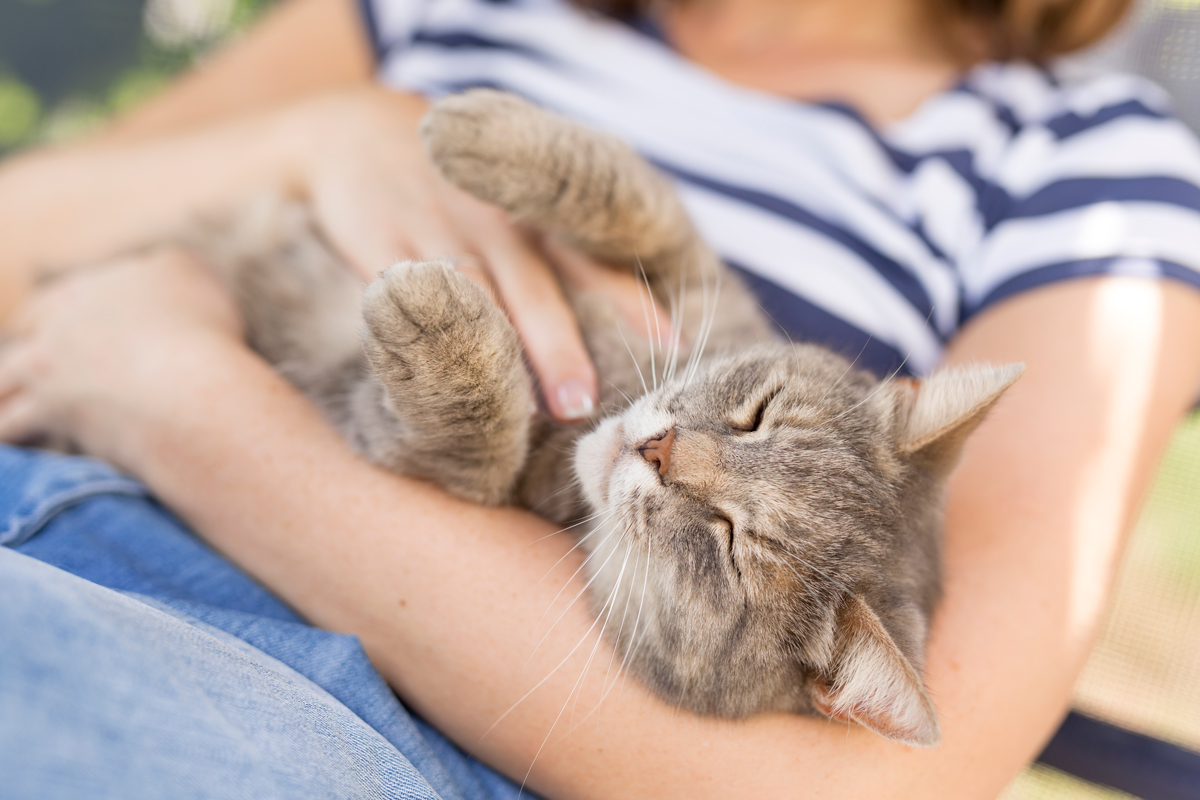How to give your pet medication
10th March, 2022

From worming tablets to eye drops to daily insulin injections, almost every pet is likely to need to take some type of medication at some point in their lives. For many, it may even become a fairly regular occurrence.
As you may know, persuading a cat or dog to take their medicine can be a challenging experience. So how do you get your pet to swallow those pills or glug down that liquid that’s going to make them feel so much better? Read on for our helpful guide to getting your pet to take their meds.
If you’re still struggling and you have pet insurance through Purely Pets, you can call our 24-Hour Vet Helpline for advice. We’re here for you day and night, with direct access to trained veterinary nurses who can give you the advice you need.
Here are some of the key points to remember when administering medicines to your cat or dog.

Follow the instructions
The first thing to note about medication is that it's very important to give your pet the exact dose, in the exact quantity and frequency, that has been prescribed by your vet. You will also find instructions on the label of the medicine itself.
You should always complete the full course of medicine, whether that's 10 daily pills or four weeks' worth of doses. Failing to finish a course of antibiotics, for instance, means that they won’t do their job properly and your pet won’t get the full benefit.
If you were to miss doses of medication for a more major condition – diabetes, epilepsy, or a heart condition, for example – this could mean that the disease isn't properly controlled, and your pet might become ill quite quickly. This is where pet insurance including emergency cover comes in.
But how exactly do you get those all-important pills inside your pet? Here are some techniques to try.
Give the medicine with food
Pet medicines most commonly come in the form of tablets or pills. Your dog or cat may refuse to take these pills in the solid form in which they come out of the packet. However, crushing them into their food can be a great way to disguise their look and taste.
The best way to do this is to crush the tablets into a small portion of food, right at the start of mealtime when your pet is still hungry. You may even want to keep them off food for 12 hours beforehand, to make sure that they're really ready to eat when medicine time comes around.
That hunger should ensure that they take the whole dose. You can then give them the rest of their portion of food, secure in the knowledge that they won't get full and walk away before they've consumed the meds.
Suitable dog foods for hiding medicines include cheese balls (shop bought or homemade!), meatballs, and anything with a creamy texture.
For cats, on the other hand, wet food usually provides a good hiding place for tablets.
Another option for both animals is pill pockets – hollow treats in different flavours, into which you can place your pill before sealing it up again. Bingo: one delicious treat for one unsuspecting dog or cat, and one pill effortlessly administered. Just make sure that your dog or cat eats the whole treat, so that they are definitely getting the full dose.
By the way, do always check with your vet that the particular tablet you’ve been prescribed is safe to crush into food. Some medicines don't work as effectively when crushed in this way, while others have to be given without food as an empty stomach is all-important. So make sure to check before you crush.
Finally, if it's proving a struggle to get your dog or cat to take their medication in solid form, it's definitely worth asking your vet whether there's a liquid option instead. Liquid medication can often be easier to give to pets. We'll take a closer look at administering liquid medicines a little further down in this article.
Phone a friend
On occasions, however, the tips we've outlined above may not work. It may be, for example, that your pet can sniff out the medicine hidden in their food, and won't go near their bowl. Some sneaky pets will even chow down on their food bowl and then spit out the tablet when your back is turned.
If this is the case, you may need some assistance in your quest to get your pet to take their pills. And here is the best way to do this. It will require a friend or family member to act as your assistant. Here’s a quick step-by-step guide:
- If the medication contains steroids or hormones, you may wish to wear disposable gloves. Otherwise, wash your hands before proceeding.
- Prepare a small syringe of water, and remove the tablet from its packaging.
- In the case of a cat or smaller dog, have them standing on a non-slip surface, with your friend standing behind them and holding them gently but firmly. In the case of a cat, you might want to wrap them in a towel so you don’t get scratched. With a larger dog, sit them on the floor against a wall, and ask your helper to sit to one side of them and keep their head and body secure.
- Next, you should gently take your pet’s upper jaw in one hand, and angle it upwards so that their nose is pointing towards the ceiling. This movement should naturally cause your cat or dog's mouth to open a little. You can now gently draw the lower jaw down, and their mouth will be fully open.
- Now, place the tablet on their tongue, as far back as possible. It's important that you place the pill on the tongue rather than simply dropping it into their mouth – the latter approach could cause gagging. As we'll see below, a 'pill popper' can be a useful tool here, helping you get the tablet in the right position.
- Once you've placed the pill on the tongue, you can close your pet's mouth by gently bringing the two jaws together. Hold their muzzle for a few seconds so that they don’t spit the tablet out straight away! You can also stroke their throat gently downwards from their muzzle to the top of the chest. As well as being a calming, bonding gesture, this will also encourage them to swallow.
- If they seem to need a little help swallowing, you can syringe a small quantity of water into the side of their mouth. This is a good idea for cats in particular, as it will prevent the tablet from getting stuck in their throat. Older cats may find it harder to swallow. Read our guide to giving an older cat medication for further advice.
- Look out for your pet licking their lips – this will usually mean that they've swallowed the medication.
- Job done! Now you can reward your pet – with praise, cuddles, and a healthy treat. This is important as it will create some positive associations. Next time they have to take a pill, they'll be more open to the idea.
- If you've not been wearing disposable gloves, don’t forget to wash your hands.
Consider a pill-popper
Available from most vets, this clever little device is like a syringe, with a plastic plunger – but no needle. It's designed for easily administering solid tablets to reluctant pets.
Essentially, the tablet fits into the soft cushioned area right at one end of the pill-popper. You then release the pill from this nozzle by pushing down on the plunger. You can place the end of the popper right at the back of your dog or cat's tongue and, once you press the plunger at the other end, it will deposit the pill – all without the need for you to place your fingers in your pet's mouth. Better for both of you!
Given a bit of practice, this method can be both easy and effective.

How to give your pet liquid medication
Your pet's medication may be in liquid form. In fact, perhaps the easiest way to disguise liquid medication is by doing the same as you would with a solid tablet: hiding it in their food.
Sometimes, though, the medication can be squirted straight into your cat or dog's mouth. This is a fairly simple procedure and won't usually require help from an assistant.
You should gently hold your pet’s jaws closed, and ease the syringe or pipette into the corner of their mouth, between the teeth. At this point, you may be tempted to squirt the medication to the back of your pet's throat, to make sure it goes down. However, this is not advisable, as it risks the medication going down their airway and causing them to choke.
Instead, carefully squirt the medication gently across the tongue. Keep a gentle pressure on the jaws, keeping the mouth closed, for a few moments, and – as above – stroke your pet's throat to encourage them to swallow the dose.
If none of the methods above seem to work for you and your pet, it's worth contacting your vet to see if they have other suggestions. After all, you don't want pill time to become a stressful part of the day. Before long, they may be running a mile as soon as they see you approaching, pipette in hand.
Remember, if you have pet insurance through Purely Pets, give the 24-Hour Vet Helpline a call for advice.
Storing and handling your pet’s medications
Always remember to store any pet medications safely out of reach of children. These products should also be kept in a dry place, away from direct sunlight. Most medications should be stored at room temperature, although some will need to be kept in the fridge. Check with your vet and/or on the label to be clear on where to store your particular medication.
When it comes to handling medications, hygiene is all-important. You should always wash your hands after handling any medications, and before giving them to your pet. This is because your hands may be carrying bacteria that may interfere with the medicine's efficacy.
Some medications, such as those that contain topical steroids, should not be handled by pregnant women. If anyone in your household is, or may be pregnant, check with your vet or with the product's usage instructions, to see whether the medication is safe to handle. If you are in any doubt, either wear gloves or don’t handle the medication – ask someone else to do it for you.
You should also let your vet know if you have any specific allergies to certain medications, such as penicillin. In this case, they may prescribe an alternative or advise you to get help administering the medication.
Keep regular… and complete the course
Ideally, you should try to give your cat or dog their medication at more or less the same time each day. In the case of twice-daily medication, doses should usually be given 12 hours apart – so at 8am and 8pm, for example. If the medicine is to be taken three times a day, an interval of 8 hours might be most suitable – for instance, at 7am, 3pm and 11pm.
You should always complete the course, even if your pet appears to have completely recovered before you have got to the end.
If you’re worried that your pet is suffering from side effects of the medication, or if your pet’s health is not improving even after they finish the course, you should contact your vet.
Keep in touch with your vet
If your pet is on a long-term course of medication, it's likely that your vet will want to see them at certain intervals (once every six months, for example). Your vet will advise you on the frequency of these checkups, and you should follow the schedule recommended.
If the costs of these regular examinations mount up, don't worry: your pet insurance policy may be able to help with these costs. It's best to arrange pet insurance when your pet is still young, so you are covered against all eventualities throughout their lifetime.
Your vet will want to check how effectively the medication is doing its job, and to be sure that that particular product is still the most effective solution for your pet's medical needs.
They will also want to look for any side effects that the medication may be producing, as well as monitoring your pet's weight – an unusual weight gain or loss may mean either that the treatment is not suitable, or that the dosage needs to be adjusted.
Administering ear drops
We should say at the outset that this section is going to be of most interest to dog owners. You see, being such clean creatures, cats rarely have ear troubles – they shouldn't need their ears cleaned, nor should they fall prey to ear infections.
Some dogs, however, are prone to recurrent ear infections. Indeed, we discussed which breeds were most vulnerable to ear infections in this blog post. These breeds, in particular, should have their ears cleaned regularly. Various products are available on the market, including wipes and drops.
When it comes to applying ear medication, be aware that most canine ear medications contain topical steroids and, as a result, should not be handled by pregnant women.
The procedure for applying aural medication is fairly simple:
- Simply hold your dog's ear flap up, thereby exposing their outer ear canal.
- Before you administer the medicine, wipe away any excess wax that has built up in your dog's ear – moist cotton wool will do this job well.
- Once this is done, you can carefully place the nozzle of the bottle into the ear canal and administer the stated amount of the medication.
- Then, just as you would rub your dog's throat to help down an oral medicine, you can gently rub the base of their ear to ease the passage of the medication through the ear canal.
If you do have to give your cat ear drops, check out this handy video from the charity Cats Protection, which will tell you what to do, step by step. Remember to never share medication between cats or dogs.
If your pet’s ear seems very painful before or after applying ear treatment, consult with your vet or, if you’re a Purely Pets policyholder, call our 24-Hour Vet Helpline.

How to give your pet eye drops
Eye medications for cats and dogs are most commonly administered in the form of eye drops. These drops generally only require one drop to be applied to the eye at each dosage: however, if you do inadvertently apply more than one drop, don't worry - it shouldn’t do any harm.
Always check whether the drops need to be shaken before use, and/or whether they should be kept in the fridge.
As with all medicine applications, there are a few key steps to follow in order to make sure you apply eye drops effectively, without causing distress to your cat or dog:
- First of all, you should clean your pet's eye(s) to remove any excess discharge.
- Then, it's a good idea to approach them from behind when you administer the eye drop, so they don't see it coming.
- Raise the animal's head upwards by holding your left hand under their chin. With their head tilted upwards like this, their eyes will open naturally.
- Then, holding the eye drop bottle in your right hand, you can rest the outer edge of your right palm on the top of the head, just above the eyes. This hand then gently pulls the upper eyelid away from the eye, exposing more of the eye and making it easier for you to apply the drops accurately.
- You can then apply one drop onto the eye, and keep tilting the head gently upwards so that gravity can do its bit and allow the eye drop to be absorbed.
Diabetic animals
If you have a dog or cat with diabetes, you may need to give them insulin injections at home. The animal charity PDSA has a handy video on how to do this safely for dogs. For cats, ask your vet to show you how to safely administer the shots.
Get your pet the help they need with pet insurance
It's difficult to predict what procedures, consultations and medicines your beloved pet may need over the course of their lifetime. However, whenever these moments do come along, pet insurance should help you to shoulder some of the costs.
Get a quick quote today.
Helpful Pages
Recent Posts
Pet Insurance Quote
- 98% claims paid *
- Claims paid directly to vets
- 24/7 vet video consultations
- Interest free monthly payments




